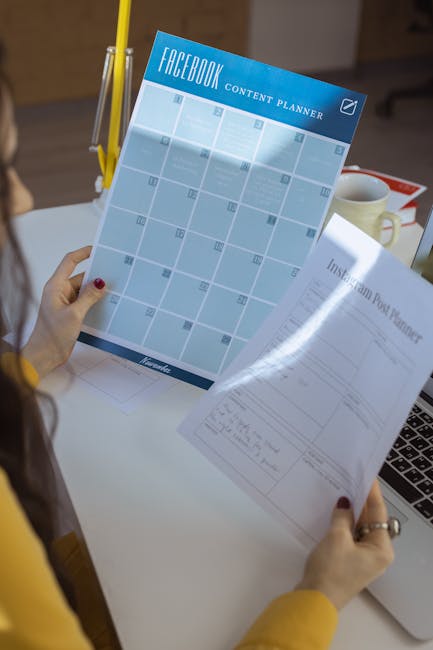Scaling Facebook Ads without incinerating your budget requires a nuanced understanding of foundational principles, meticulous optimization, strategic expansion, and continuous, data-driven analysis. It is less about brute-force budget increases and more about intelligent, targeted growth that respects the delicate balance between reach and efficiency. The goal is to scale profitably, ensuring every dollar spent contributes to a measurable return, rather than merely inflating impressions. This comprehensive guide will dissect the multifaceted approach required to achieve sustainable growth on the Facebook advertising platform.
I. The Indispensable Foundation: Building for Scale, Not Just Spend
Before contemplating any form of budget escalation, the bedrock of your Facebook advertising efforts must be exceptionally solid. Neglecting these fundamental elements is akin to building a skyscraper on quicksand – destined for collapse under increased pressure. A robust foundation ensures that as you amplify your spend, your performance scales proportionally, preventing inefficient expenditure.
A. Robust Pixel Implementation and Event Tracking
The Facebook Pixel is the cornerstone of effective advertising on the platform, acting as your digital eyes and ears, collecting invaluable data on user behavior. For scaling, its implementation must be flawless and comprehensive. Beyond basic page views, ensuring the accurate firing of standard events – like “ViewContent,” “AddToCart,” “InitiateCheckout,” and critically, “Purchase” – is paramount. Custom conversions should be defined for unique actions not covered by standard events, providing granular insight into user journeys. Event matching quality, indicating how well pixel data can be attributed to specific users on Facebook, must be high, alongside proper deduplication to prevent inflated conversion counts.
The evolution of privacy landscapes, particularly with iOS 14.5+ updates, has amplified the importance of server-side tracking via the Conversions API (CAPI). Integrating CAPI with your pixel creates a more resilient data pipeline, sending web and app events directly from your server to Facebook’s, bypassing browser-side restrictions. This dual-layer approach (pixel + CAPI) ensures maximum data fidelity, leading to more accurate attribution, better audience segmentation, and ultimately, superior optimization and scaling capabilities. Without precise conversion data, Facebook’s algorithms cannot efficiently find the right audience for your objectives, rendering scaling efforts largely ineffective and budget-consuming. The clarity and completeness of your conversion data directly correlates with the platform’s ability to drive your desired results at scale.
B. Understanding Your Core Metrics and Business Fundamentals
Scaling without a profound understanding of your business economics is a recipe for burning budget. Key metrics like Customer Lifetime Value (LTV) and Customer Acquisition Cost (CAC) are non-negotiable. LTV, the predicted net profit attributed to the entire future relationship with a customer, dictates how much you can afford to spend to acquire a new one. Your target CAC, therefore, should always be less than your LTV, accounting for profit margins. Understanding your Break-Even ROAS (BEROAS) – the minimum Return on Ad Spend required to cover your advertising costs – is crucial. Any ROAS below this threshold means you are losing money. Your target ROAS should always be above your BEROAS, ideally significantly, to ensure profitability.
Furthermore, deep knowledge of your product’s average profit margin, conversion rates across your funnel, and the typical customer journey length from first touch to conversion are essential. Integrate your Facebook Ad data with your backend analytics (CRM, ERP systems) to gain a holistic view of customer behavior, not just what Facebook reports. This comprehensive data integration allows you to identify your most profitable customer segments, understand true acquisition costs factoring in post-purchase behaviors, and determine the maximum sustainable ad spend. This financial clarity empowers you to scale aggressively when profitable, and to pull back or re-strategize when efficiency declines, preventing wasteful spending on campaigns that fail to deliver a true return.
C. Cultivating a Winning Creative Strategy
Creatives are the engine of your Facebook ad campaigns. Scaling demands not just good creatives, but a system for perpetually testing, refreshing, and optimizing them. Ad fatigue – where your audience grows tired of seeing the same ads, leading to declining performance – is an inevitable challenge at scale. Proactive creative rotation is the antidote. Your strategy should embrace variety: static images, engaging carousels, short-form and long-form videos, Instagram Stories, and Reels. Each format offers unique opportunities to capture attention and convey messages.
Diversify your creative angles: showcase user-generated content (UGC) for authenticity, leverage testimonials for social proof, demonstrate product features and benefits, or adopt problem-solution narratives. Continuously test different hooks, calls-to-action, and value propositions. Copywriting principles like AIDA (Attention, Interest, Desire, Action) or PAS (Problem, Agitate, Solve) should inform your ad copy, ensuring it resonates with your target audience. Implement a rigorous A/B testing framework for your creatives, not just initially, but as an ongoing process. Identify winning creative types, analyze what elements drive engagement (e.g., specific visuals, emotional appeals, benefit statements), and then produce variations based on these insights. A robust creative pipeline ensures you always have fresh, high-performing assets ready to deploy, preventing performance plateaus as you scale. Without a dynamic creative strategy, scaling simply means showing more of the same, which rapidly leads to diminishing returns and wasted budget.
D. Strategic Audience Definition and Diversification
Audience strategy is the other half of the creative equation. To scale, you need a methodical approach to audience identification and expansion. For cold audiences, start with broad interest stacking, combining several relevant interests to create a more defined, yet still large, target group. Experiment with broad targeting, allowing Facebook’s algorithm maximum room to find profitable customers, especially when you have strong pixel data. Layering demographic filters (age, gender, location) can refine these broad audiences further without making them too niche.
Lookalike Audiences (LLAs) are a cornerstone of scaling. Beyond basic website visitors, create LLAs based on specific valuable actions: purchasers, high-LTV customers, individuals who added to cart but didn’t buy, or even engaged video viewers. Test different Lookalike percentages (1%, 1-2%, 1-5%, 1-10%) to expand reach incrementally. A 1% LLA targets the closest match, while 5-10% LLAs offer wider reach but may be less precise. Your source data quality for LLAs is critical – a LLA based on 1,000 high-value customers will outperform one based on 10,000 low-value website visitors.
For retargeting, segment your audiences granularly: recent website visitors, add-to-carts, initiate checkouts, and those who engaged with your Facebook/Instagram pages. Create sequences of ads that align with their stage in the funnel. Crucially, always use exclusion lists to prevent showing ads to recent purchasers (unless for upsells/cross-sells) or users who have already converted, eliminating wasted impressions and improving user experience. Diversifying your audience strategy ensures you’re consistently reaching new, relevant prospects while effectively nurturing those already aware of your brand, supporting sustainable growth.
II. Pre-Scaling Optimization: Refining for Efficiency
Before turning up the budget dial, every component of your existing campaigns must be meticulously optimized for peak efficiency. Scaling an inefficient campaign only amplifies the inefficiencies, leading to a faster burn rate of your budget without commensurate returns. Pre-scaling optimization involves squeezing every drop of performance from your current setup.
A. Optimizing Campaign Objectives and Bid Strategies
Your campaign objective must precisely align with your business goal. For e-commerce or lead generation, “Conversions” (optimizing for purchase or lead) is almost always the most effective objective for scaling. Traffic campaigns might bring clicks but rarely high-quality conversions. Video views might boost brand awareness but won’t directly drive sales. Misaligned objectives lead to wasted spend, as Facebook optimizes for the chosen objective, not your underlying business outcome.
Regarding bid strategies, Facebook offers several options, each suited to different scaling phases. “Lowest Cost” (also known as Automatic Bidding) is often the default and a good starting point, allowing Facebook to find the cheapest conversions within your budget. For initial testing and when data is scarce, it’s efficient. However, for more controlled scaling, “Cost Cap,” “Bid Cap,” and “ROAS Cap” come into play.
- Cost Cap: Instructs Facebook to get as many conversions as possible while staying below a specified average cost per result. This strategy is excellent for stabilizing your CPA as you scale, ensuring you don’t overspend per conversion. It can be more restrictive initially but offers better control over profitability.
- Bid Cap: Sets a maximum bid for each auction. This is the most restrictive and often requires deep knowledge of your true acquisition costs and the auction environment. While it offers granular control, it can limit delivery if your bid is too low for competitive auctions, hindering scale.
- ROAS Cap: (Return on Ad Spend Cap) instructs Facebook to aim for a minimum ROAS. This is ideal for e-commerce brands whose primary goal is direct revenue generation. It ensures that even as you scale, your campaigns remain profitable on a revenue-per-ad-dollar basis. However, like Cost Cap, it can limit delivery if the cap is too high or your product isn’t converting efficiently.
Understanding the “learning phase” is critical. Any significant change to a campaign (budget, bid strategy, audience, creative) triggers this phase, during which Facebook explores optimal delivery. Frequent changes during scaling can keep your campaigns perpetually in this phase, hindering performance. Therefore, make strategic, well-thought-out changes. When changing bid strategies, do so incrementally and monitor closely, allowing the algorithm time to adjust.
B. Ad Set Budget Optimization (ABO) vs. Campaign Budget Optimization (CBO)
The choice between Ad Set Budget Optimization (ABO) and Campaign Budget Optimization (CBO) is pivotal for scaling.
- ABO: Budgets are set at the individual ad set level. This gives you granular control over how much each audience or ad set spends. It’s often preferred for initial testing phases, allowing you to allocate precise budgets to test different audiences, creatives, or offers. If you want to force spend on a specific audience regardless of its immediate performance (e.g., a highly valuable retargeting segment), ABO is effective.
- CBO: Budgets are set at the campaign level, and Facebook automatically distributes the budget among the ad sets within that campaign to achieve the best results for your chosen objective. CBO is generally considered superior for scaling proven campaigns, as Facebook’s algorithm is typically more efficient at finding the best performing ad sets and allocating budget to them. It minimizes manual intervention once you’ve identified winning combinations.
The transition from ABO to CBO is a common scaling strategy. Once you’ve identified 2-5 winning ad sets (audiences + creatives) through ABO testing, you can migrate them into a CBO campaign. This allows Facebook to dynamically allocate budget to the top performers, often leading to better overall campaign efficiency. Best practices for CBO include ensuring a sufficient budget (e.g., at least 5x the target CPA for the campaign per day) to allow the algorithm enough data to optimize effectively. Avoid too many ad sets within a single CBO campaign (ideally 3-7) to prevent budget fragmentation. Regularly review performance within CBO campaigns and prune underperforming ad sets to maintain efficiency.
C. Landing Page and Conversion Funnel Optimization
Your Facebook Ads drive traffic to your landing page or conversion funnel. If this destination is inefficient, even the best ad campaigns will fail to scale profitably. Before increasing ad spend, ensure your landing pages are meticulously optimized. Page load speed is paramount, especially on mobile devices; every second of delay significantly increases bounce rates. Ensure your pages are fully mobile-responsive and intuitive on smaller screens.
The landing page must have a clear, compelling value proposition that resonates with the ad copy. The call-to-action (CTA) should be prominent and unambiguous. Minimize friction in the conversion process: simplify forms, reduce steps in the checkout flow, and offer multiple payment options. Conduct A/B tests on landing page elements (headlines, images, CTAs, layout) to continuously improve conversion rates. A small increase in conversion rate can have a dramatic impact on your effective CPA at scale, turning a break-even campaign into a highly profitable one.
D. Proactive Ad Account Health Management
Maintaining a pristine ad account health is non-negotiable for scaling. Facebook’s algorithm heavily factors in ad account history and user feedback. Monitor negative feedback (e.g., “hide ad,” “report ad”) and strive to keep it low. Ads with high negative feedback can lead to increased costs and reduced delivery. Regularly check your Relevance Score, Quality Ranking, Engagement Rate Ranking, and Conversion Rate Ranking in Ads Manager; these metrics provide insights into how well your ads resonate with your audience and perform against competitors.
Strictly adhere to Facebook’s advertising policies. Policy violations can lead to ad rejections, ad account flags, and even permanent bans, which immediately halt any scaling efforts and can be devastating. Understand the nuances of prohibited content, restricted categories, and community standards. Proactively resolve any flagged ads. Be aware of ad account spending limits and daily caps, especially on new accounts, and work to get them increased as your spend grows, demonstrating consistent policy adherence and healthy payment history. A healthy ad account acts as a trust signal to Facebook, facilitating smoother delivery and better performance at scale.
III. Strategic Scaling Methodologies: Growth Beyond Incrementalism
Once your foundations are solid and optimizations are in place, you can embark on strategic scaling. This isn’t just about spending more; it’s about intelligent expansion across various dimensions to unlock new pockets of profitability without compromising efficiency.
A. Vertical Scaling: Increasing Budget on Proven Winners
Vertical scaling involves increasing the budget on ad sets or campaigns that are already demonstrating strong, consistent performance. This is the most straightforward method but must be approached cautiously to avoid prematurely burning budget.
The “10-20% rule” is a widely adopted guideline: increase your daily budget by no more than 10-20% every 24-48 hours. This slow and steady approach allows Facebook’s algorithm to adjust to the increased spend without drastically disrupting performance or triggering the learning phase too often. A sudden, large budget increase (e.g., doubling your budget overnight) can shock the algorithm, leading to wildly inefficient delivery, increased CPMs, and a rapid decline in ROAS, as Facebook struggles to find conversions at the new, higher spend rate.
Another common tactic is the duplication strategy. Instead of directly increasing the budget on an existing winning ad set, you duplicate the ad set (with the same audience, creatives, and settings) into a new ad set or campaign, assigning it a higher budget. This creates a fresh learning phase for the duplicated ad set, often allowing it to find new pockets of efficiency. This method is particularly effective when an existing ad set shows signs of saturation or diminishing returns at its current budget level. You can duplicate multiple times, creating a “stack” of identical ad sets, each contributing to the overall scaling.
When using CBO for vertical scaling, you consolidate multiple proven ad sets (audiences and creatives) under a single campaign budget. As you increase the campaign budget, Facebook will automatically funnel more spend towards the highest-performing ad sets within that CBO, maximizing overall efficiency. This is highly effective when you have several variations of creatives or audiences that perform well and want Facebook to continuously optimize budget distribution among them.
During vertical scale, obsessive monitoring of key metrics is crucial. Watch your CPA (Cost Per Acquisition) and ROAS (Return on Ad Spend) like a hawk. If your CPA begins to creep up significantly or your ROAS starts to decline consistently, it’s an indication that you might be approaching saturation for that specific audience or creative combination at that budget level. CPM (Cost Per Mille) can also be a warning sign; if it rises sharply, it suggests increased competition for your audience or ad fatigue. Identifying these saturation points early allows you to pull back, pivot to horizontal scaling, or introduce fresh creatives, preventing budget from being wasted on diminishing returns. The “refresh rate” of your audience – how quickly new potential customers enter your target group – directly impacts how much you can vertically scale before hitting saturation.
B. Horizontal Scaling: Expanding Reach and Diversifying
Horizontal scaling involves expanding your advertising efforts across new dimensions rather than simply spending more on existing ones. This diversifies your risk and opens up new avenues for growth.
Audience expansion is a primary horizontal scaling lever. If your 1% Lookalike Audience is performing well, test a 1-3% LLA, then a 1-5%, and even a 1-10%. These broader LLAs offer significantly larger reach, albeit with potentially lower precision, but Facebook’s algorithm can often find profitable customers within them if your pixel data is strong. Explore new interest segments that are highly relevant to your product or service. Consider broad targeting with minimal demographic layering once you have a robust pixel and conversion history; this allows Facebook’s AI the most flexibility to find efficient conversions within a massive audience pool. Geographic expansion (e.g., from specific cities to an entire country, or expanding to new countries/regions) can also unlock substantial new audiences, provided your product and logistics support it.
Creative diversification is another critical horizontal strategy. Don’t just iterate on existing winners; develop entirely new creative concepts, angles, and formats. If video ads are performing, test long-form vs. short-form. If static images are working, try dynamic product ads or carousels. Explore different value propositions, emotional appeals, and calls-to-action. Launching fresh creative concepts can often unlock entirely new audiences or re-engage fatigued ones, injecting new life into your campaigns.
Placement expansion involves testing ad placements beyond the standard Facebook and Instagram Feeds. Explore Audience Network, Messenger placements, and increasingly, Instagram Reels and Stories. While some placements might initially have lower conversion rates, they can offer lower CPMs and provide valuable additional reach, contributing to overall scale.
Campaign duplication with strategic variations is a powerful horizontal method. Duplicate entire campaigns, but adjust specific variables. For example, create a duplicate campaign with a different objective (e.g., from Conversions to Lead Generation if you have a lead nurturing funnel), or target different audience subsets with tailored messaging. Experiment with different bid strategies across duplicated campaigns to see which provides the best balance of scale and efficiency. This allows you to explore multiple avenues simultaneously, increasing the chances of finding new winning combinations.
Finally, expanding your retargeting segments can lead to horizontal scale. Instead of just general website visitors, segment by specific actions (e.g., visited product page X, watched 75% of video Y, added to cart but didn’t initiate checkout). Tailor your retargeting ads and offers to each segment’s specific intent, leading to higher conversion rates and efficient re-engagement.
C. Hybrid Scaling: The Synergistic Approach
The most effective scaling strategies often involve a hybrid approach, skillfully combining vertical and horizontal methods. Instead of viewing them as mutually exclusive, consider them complementary tools in your scaling arsenal. For instance, you might identify a top-performing ad set (proven audience + creative) through your ABO testing. You then vertically scale this specific ad set by incrementally increasing its budget or duplicating it. Simultaneously, you launch new horizontal campaigns testing entirely new creative concepts or exploring broader Lookalike Audiences.
This creates a “portfolio” approach to your ad account. You have stable, high-performing campaigns undergoing careful vertical scaling, providing consistent revenue. Alongside these, you run “testing” campaigns (often with smaller budgets) exploring new audiences, creatives, or offers. Once a new test campaign identifies a winner, it can then be moved into a “scaling” phase, where it undergoes its own cycle of vertical budget increases. This dynamic interplay ensures continuous growth while maintaining a strong core of profitable campaigns. It diversifies your reliance on any single ad or audience, making your overall ad account more resilient to performance fluctuations and saturation.
D. Consolidation and Pruning: Maintaining Efficiency
Scaling isn’t just about adding; it’s also about strategically removing and consolidating. As you expand, your ad account can become cluttered with underperforming ad sets, ads, or even entire campaigns. Regularly auditing and pruning these inefficiencies is crucial to prevent budget burn.
Establish clear thresholds for turning off underperforming elements. For example, if an ad set has spent X amount of its budget without generating a single conversion, or if its ROAS consistently falls below your break-even point for a sustained period, pause it. This frees up budget to be reallocated to higher-performing elements. Consolidate similar audiences or creatives if they are performing identically, ensuring Facebook’s algorithm has fewer, but more powerful, options to optimize within. Simplifying your account structure reduces complexity, makes analysis easier, and often allows Facebook’s algorithm to optimize more effectively with fewer decision points. The “Rule of Three” (or similar thresholds) suggests that if an ad or ad set has reached 3x your target CPA without a conversion, it’s likely a loser and should be paused. This disciplined approach to pruning prevents valuable budget from being siphoned away by inefficient elements as you scale.
IV. Advanced Strategies and Continuous Optimization for Scale
As your ad spend grows, manual management becomes increasingly difficult and prone to error. Advanced tools and strategies become essential to maintain control, optimize performance, and identify new opportunities at scale.
A. Leveraging Automation Rules for Dynamic Management
Facebook’s automation rules are powerful tools for managing campaigns at scale without constant manual intervention. They allow you to define conditions and corresponding actions, effectively acting as your 24/7 ad manager.
- Budget Control: Set rules to automatically increase or decrease budget based on performance metrics like ROAS or CPA. For instance, if an ad set’s ROAS is consistently above your target, increase its budget by 10%. If its CPA exceeds a certain threshold, decrease its budget or pause it.
- Performance-Based Pauses: Automatically turn off ad sets or individual ads that fall below your profitability thresholds (e.g., ROAS < BEROAS for 3 consecutive days, or CPA > X after Y spend). This prevents budget from being wasted on poor performers.
- Notification Rules: Receive alerts when certain conditions are met, such as when daily spend exceeds a limit, CPMs increase sharply, or ROAS drops unexpectedly. This allows for rapid intervention when issues arise.
- Creative Refresh Reminders: While not directly performance-based, rules can be set to notify you when an ad has been running for a certain duration or has reached a specific frequency, prompting a creative refresh to combat ad fatigue.
The key to effective automation rules is well-defined conditions and actions. Avoid overly aggressive rules that might prematurely cut off ads in their learning phase or over-allocate budget too quickly. Test rules on a small scale before applying them broadly. Automation frees up valuable time for strategic thinking, creative development, and deeper analysis, rather than repetitive manual adjustments.
B. Dynamic Creative Optimization (DCO) for Efficient Testing
Dynamic Creative Optimization (DCO) is a powerful feature for testing and identifying winning creative combinations, especially useful when scaling. Instead of manually creating dozens of ad variations, DCO allows you to upload multiple images, videos, headlines, primary texts, and call-to-action buttons. Facebook’s system then automatically generates and tests thousands of combinations, showing the most effective ones to your audience.
DCO excels at rapid testing of creative elements to find the best performing permutations. It’s particularly useful for products with diverse features or for brands targeting varied customer segments, as it can tailor the ad message to individual users based on what Facebook predicts they will respond to. This can accelerate the creative testing process significantly, allowing you to move to a scaling phase with proven elements faster.
However, DCO has limitations. It provides less granular control over specific ad combinations, and its reporting can sometimes be less clear than standard ad reporting for individual ad elements. Best practice suggests using DCO for initial creative exploration and testing. Once winning combinations are identified, you can then manually build those top-performing static or video ads to gain more control and potentially scale them further as standard ads. DCO streamlines the early phases of creative development, ensuring you scale with the strongest possible creative assets.
C. Strategic Account Structure for Large Scale
As you scale, your ad account can become complex. A well-thought-out account structure is vital for clarity, manageability, and efficient optimization. The balance between simplicity and granularity depends on your specific needs.
- Separation: A common strategy is to separate cold acquisition campaigns from retargeting campaigns. This allows for distinct budget allocation, objectives, and performance monitoring for each part of the funnel.
- Campaign Naming Conventions: Implement clear, consistent naming conventions for campaigns, ad sets, and ads (e.g., “Objective_AudienceType_CreativeTheme_Date”). This makes navigation and analysis significantly easier, especially in large accounts.
- Labels and Tags: Utilize Facebook’s labeling and tagging features to further organize campaigns, ad sets, and ads by product, vertical, launch date, or performance status.
- Multiple Ad Accounts: For very large advertisers, managing multiple ad accounts can be beneficial. This might be for different brands, different geographical regions, or as a contingency against policy issues with a single account. However, this adds complexity to reporting and attribution, requiring robust external dashboards.
The goal is to create a structure that provides sufficient granularity for optimization without becoming so complex that it hinders management. A clean, organized account reduces the likelihood of errors and allows you to quickly identify areas for improvement or scale.
D. Advanced Audience Segmentation and Customization
Beyond standard Lookalikes, advanced audience strategies can unlock significant scaling potential.
- Value-Based Lookalikes: If you have LTV data in your CRM, leverage it to create Lookalikes based on the value of your customers. For example, a Lookalike of your top 10% highest LTV customers will likely perform better than one based on all purchasers, as Facebook optimizes to find similar high-value prospects.
- Retention-Based Lookalikes: Create Lookalikes based on users who have exhibited strong retention or repeat purchase behavior. These audiences are likely to contain individuals who become loyal customers, reducing churn and improving overall LTV.
- Granular Exclusions: Continuously refine your exclusion lists. Beyond recent purchasers, exclude customers who have engaged in negative feedback or those unlikely to convert again within a specific timeframe (unless for upsell/cross-sell campaigns).
- Offline Conversion Events: Integrate offline sales data (e.g., from physical stores or phone orders) into Facebook Ads Manager as custom conversions. This provides a fuller picture of your customer journey and allows Facebook to optimize for valuable offline actions, opening up new scaling opportunities.
These advanced segmentation techniques allow you to find higher-quality audiences more efficiently, reducing wasted spend and improving ROAS as you scale.
E. Beyond Last-Click: Understanding Attribution Models
Relying solely on Facebook’s default last-click attribution window (typically 7-day click, 1-day view) when scaling is a significant limitation. It undervalues initial touchpoints and overlooks the complex multi-touch customer journeys common today.
- Multi-Touch Attribution: Understand the different attribution models available (e.g., Google Analytics’ models like Linear, Time Decay, Position-Based, Data-Driven).
- Linear: Distributes credit equally across all touchpoints.
- Time Decay: Gives more credit to touchpoints closer to the conversion.
- Position-Based (U-shaped): Gives 40% credit to the first and last touch, distributing the remaining 20% to middle interactions.
- Data-Driven: (Google Analytics 360, some third-party tools) Uses machine learning to assign credit based on your specific conversion data.
- Integration: Integrate your Facebook ad data with external analytics platforms (Google Analytics, Mixpanel, CRM data) and dedicated attribution software (e.g., Northbeam, Triple Whale, Rockerbox). These tools provide a holistic, cross-channel view of how your ads contribute to conversions, identifying which channels assist conversions even if they aren’t the last click.
Understanding true attribution informs your scaling decisions. An ad that appears to be underperforming on a last-click model might actually be a crucial first touchpoint that initiates many profitable customer journeys. Identifying these “assisting” campaigns allows you to scale them confidently, knowing they contribute to overall business growth, preventing premature budget cuts to valuable parts of your funnel. This holistic view is vital for sustainable, profitable scaling.
V. Monitoring, Analysis, and Sustaining Growth
Scaling is not a one-time event; it’s a continuous process of monitoring, analysis, adaptation, and refinement. Neglecting this phase will inevitably lead to budget burn and a plateau in performance.
A. Key Performance Indicators (KPIs) for Scaling Success
While ROAS (Return on Ad Spend) and CPA (Cost Per Acquisition) remain paramount, a nuanced understanding of other KPIs is essential for effective scaling:
- CPC (Cost Per Click) and CTR (Click-Through Rate): These indicate how well your ads are resonating and how much it costs to get traffic. Declining CTR and rising CPCs can signal ad fatigue or increased competition.
- CPM (Cost Per Mille): Cost per thousand impressions. A rising CPM suggests increasing competition for your target audience, audience saturation, or a decline in your ad’s quality ranking. It directly impacts your overall cost efficiency.
- Frequency: The average number of times a unique user has seen your ad. A high frequency (e.g., >3-4) often signals ad fatigue and audience saturation, leading to diminishing returns. It’s a critical early warning sign.
- Conversion Rate (CVR): The percentage of clicks that result in a conversion. Monitoring CVR across your campaigns and ad sets helps identify issues with your landing page, offer, or audience quality.
- Breakdowns: Always analyze your KPIs broken down by age, gender, placement, region, and device. This granular data helps identify specific segments that are over- or under-performing, informing further optimization and horizontal scaling opportunities. For example, if your ads perform exceptionally well on Instagram Reels for a specific age group, you can double down on that placement and audience.
Regularly reviewing these KPIs in combination provides a comprehensive picture of campaign health and identifies where your budget is performing efficiently versus where it’s being wasted.
B. Identifying and Combatting Ad Fatigue and Audience Saturation
Ad fatigue and audience saturation are the silent killers of scaled campaigns.
- Ad Fatigue: Occurs when your target audience sees your ads too many times, leading to declining engagement and efficiency. Signs include a sharp drop in CTR, a rise in CPM and CPA, an increase in negative comments, and declining relevance scores. The primary solution is continuous creative refresh. Launch new angles, formats, and messages. Test completely different ad concepts.
- Audience Saturation: Happens when you’ve shown your ads to a significant portion of your target audience, and there are few new, profitable prospects left to reach within that segment. High frequency is a key indicator. Strategies to combat saturation involve horizontal scaling: expanding into new Lookalike percentages, broad targeting, exploring new interest categories, or expanding geographically. You might also need to increase your audience size significantly to accommodate higher daily budgets. Estimate the maximum spend capacity of an audience by considering its size; a small, highly targeted audience might quickly become saturated at high daily budgets.
Proactive monitoring of frequency and other performance indicators allows you to anticipate and mitigate these issues before they significantly impact your budget efficiency.
C. Robust Reporting and Analytical Frameworks
Manual data extraction and analysis become unsustainable at scale. Implement robust reporting and analytical frameworks:
- Custom Dashboards: Utilize Facebook Ads Manager’s custom dashboard feature to create personalized views of your most critical KPIs. Save these views for quick access.
- Data Export: Regularly export detailed performance data for deeper analysis in spreadsheets (e.g., Google Sheets, Excel). Pivot tables and conditional formatting can reveal hidden trends and insights.
- BI Tools Integration: For large-scale operations, integrate your Facebook Ads data with business intelligence (BI) tools like Google Data Studio, Tableau, Looker, or Power BI. These tools allow for automated reporting, cross-channel data visualization, and advanced custom dashboards tailored to your specific business needs.
- Alerts: Set up automated alerts (either within Facebook Ads Manager or via third-party tools) to notify you of significant performance changes, budget thresholds being met, or potential issues, enabling rapid response.
A strong analytical framework ensures that every scaling decision is backed by data, preventing guesswork and minimizing the risk of budget waste. It also facilitates easier communication of performance to stakeholders.
D. External Factors and Continuous Adaptation
Facebook Ads do not operate in a vacuum. External factors and the dynamic nature of the platform itself necessitate continuous adaptation to maintain performance at scale.
- Market Seasonality and Trends: Account for seasonal fluctuations (e.g., holidays, back-to-school, summer slump) that impact consumer demand and advertising costs. Adjust budgets and messaging accordingly. Stay abreast of broader market trends relevant to your industry.
- Competitor Analysis: Regularly utilize the Facebook Ad Library to see what your competitors are running. Analyze their creative angles, messaging, and offers. This can provide valuable insights for your own creative development and strategic positioning, helping you identify white space or learn from their successful tactics.
- Macroeconomic Changes: Be aware of broader economic conditions (e.g., inflation, recessions) that can affect consumer spending patterns and overall ad effectiveness. Be prepared to adjust your strategy in response to these shifts.
- Facebook Platform Updates and Policy Changes: Facebook’s platform is constantly evolving, with new features, ad formats, and policy updates (e.g., privacy changes like iOS 14.5+ impact, new AI capabilities). Stay informed through official Facebook Business resources, industry blogs, and communities. Adapting quickly to these changes is crucial for maintaining competitive advantage and compliance, ensuring your scaling efforts remain viable. The landscape of digital advertising is fluid; a fixed strategy will inevitably lead to stagnation. Continuous learning, experimentation, and adaptation are the hallmarks of successful, sustained Facebook ad scaling.










